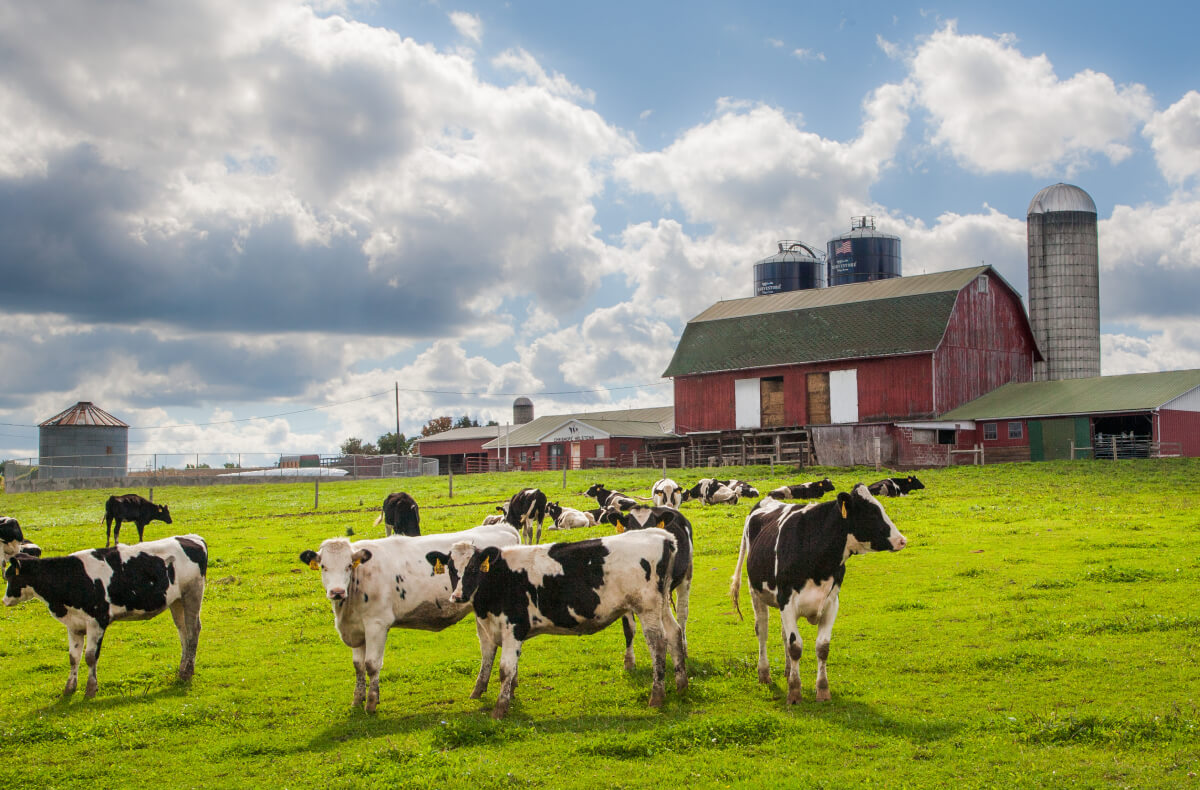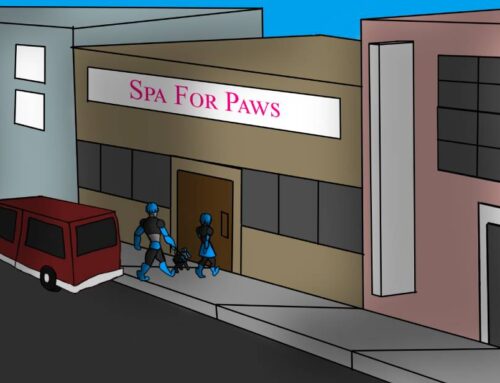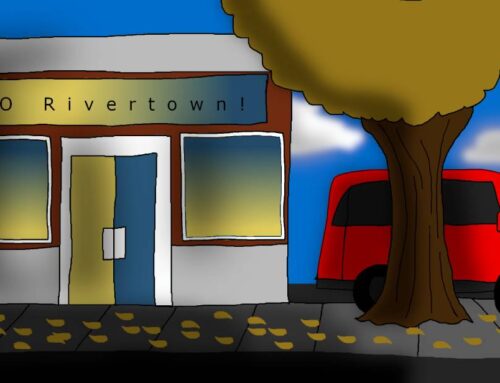Synopsis: Dairy farmers want a disinfection alternative that is readily available, low-maintenance, effective, and safe for cows.
Application: The Scienco®/FAST SciCHLOR® onsite sodium hypochlorite generator can create sodium hypochlorite solutions of various concentrations suitable and safe for dairy farming, and can function automatically.
Poppy Fields Dairy was in its fifth year of operation in the bucolic area of north central Pennsylvania. Their herd had grown to 150 Holsteins. As on most days after the first milking of the day, dairy owners Gary and Mallie Taylor sat across from each other at the wide desk they shared in their dairy office, Gary reviewing the latest production numbers and Mallie returning to her research in the herd’s genetics. Her computer sprang to life with the screensaver images of Poppy, the cow that was the inspiration for Poppy Fields. The photos never failed to make Mallie smile.
Nearly two decades earlier, then thirteen-year-old Mallie’s first glimpse of the calf with the flower-shaped marking on its side was only hours after calving at her father’s Rogers Dairy. Mallie begged her father to sell it to her. Gill Rogers clearly doted on his only daughter and would willingly have given her anything, including the wobbly little calf. But values and principles run deep in dairy country and Gill and Mallie had negotiated an elaborate chore schedule that would result in Poppy becoming the first cow in Mallie’s “herd.”
Poppy was one of those happy accidents of genetics, when a spectacular calf results from a solidly productive, albeit unremarkable, bloodline. After taking numerous awards at local and state livestock competitions, Poppy turned into a prized milk producer and her offspring did too, becoming valuable additions to the Rogers Dairy herd and, subsequently, to Poppy Fields. And she’d inspired Mallie to emphasize genetics in her dairy science studies at the state university.
When Gary Met Mallie
Mallie Rogers had heard about Gary Taylor long before she met him. She’d seen his name over and over again in the state 4-H competition standings. His Holsteins were always among the finalists in the grand championships. But in Mallie’s sophomore year of high school, her own prized Holstein Poppy had led its yearling heifer class in the county and Mallie was looking forward to her first entry in state competition.
The state 4-H judges were impressed with Poppy, too. After the ribbon presentation and photography session, Mallie led Poppy back to the entrant’s dairy barn. She pinned Poppy’s championship rosette on the stall, broke into a big grin, and exclaimed, louder than she intended, “Take that, Gary Taylor!”
“I should take what?” came a voice from the next row of cattle tie stalls. Mallie looked up in surprise and embarrassment at the tall boy smiling down at her and decided on the spot that he might be even prettier than her beloved Poppy.
Gary and Mallie’s life was all about the cows, monitoring them constantly to keep them healthy and keep production numbers up and assure that robust newborn calves kept growing the herd. Normally, that focus meant several hours in the office most days.
Today, however, they would be leaving early to meet their dairy foreman at the big statewide dairy show. Toby Birch had been Gill Rogers’ foreman for the last decade and after Gill retired from dairying, Gary and Mallie had been overjoyed to make Toby part of their dairy staff.
As they shut down their computers and exited the office, Mallie’s gaze went to the chemical storage area. She stopped in front of its locked door. “You know,” she said to Gary, “if we expand the herd much bigger, we’re going to have to expand this storage area—again!”
Kept securely locked, the area housed chemicals for cleaning and disinfecting the milking parlor and equipment, as well as the specialized teat dips and foot baths used to counter environmental pathogens that could lead to mastitis and other ailments that could compromise the health of their herd.
Gary replied, “Toby heard you talking about that the other day and said he had something special to show you at the dairy show. We’re supposed to meet him at booth 315 at the expo center at one o’clock. We’d better get a move on.”
They found Toby among a throng of dairy producers and FFA and 4-H kids clustered at the Scienco®/FAST booth 315. At the center of the booth was a sleek looking sodium hypochlorite generator. Most of the kids, however, and more than a few adults, were staring unabashedly at the duo representing the company.
“They’re B.O.T.S.” Toby whispered to Mallie and Gary.
“Whats?” Mallie whispered back.
“B.O.T.S.!” Toby explained. “BioMicrobics Onsite Treatment Specialists. B.O.T.S., for short. I met them earlier and told them you were coming. You’ll get a briefing on the generator as soon as I catch their eye. Oh, and by the way, they can fly.”
Toby had apparently caught the B.O.T.S’ attention, because in a moment, one of them effortlessly rose above the delighted crowd, and gently settled to the ground next to the Taylors.
“Hi, I’m Robust,” the figure introduced himself. “I understand you’d like an alternative solution to all those disinfectant chemicals you have to store at your dairy.”
Mallie nodded enthusiastically. “Please tell me there is a safe—and reliable—alternative.”
“There is now. It’s the Scienco®/FAST SciCHLOR® onsite sodium hypochlorite generator. Let me show you how it works.”
He led them to the bright blue generator and demonstrated how simply it operated. By hooking up to power and water sources and then by adding salt to the brine side of the tank, the equipment could create a liquid sodium hypochlorite disinfecting solution at the desired concentration.
Soon they were joined by the other B.O.T.S. Aerobe who added that the generator resulted in a lower cost than the disinfectant chemicals they were currently using.
She said, “You’re probably tired of the price fluctuations and availability of iodine, am I right?”
The Taylors nodded.
“Are you using a disinfectant foot bath for your cows, too?” Aerobe asked?
“Of course,” Mallie said.
“You can set the salinity concentration for hoof disinfecting, too, on demand and produce just the amount you need.”
“No chlorine tanks anymore?” Mallie asked hopefully.
“No, that’s the simple beauty of this generator. Clean water plus granular salt plus energy—and you get chlorine—as hypochlorite, in the precise strength you need.”
“What about maintaining it? Toby has enough to do without babysitting another piece of machinery,” Gary added.
Robust responded, “Much of its operation is on an automatic, continuous basis. You just set the pump to Auto and the power supply to On and it does the rest. As you use the hypochlorite from the recirculating tank, the water and brine automatically refill the tank back to the correct strength of brine. In fact, it won’t dispense until the correct salinity is reached.”
“A lot of dairies have made hypochlorite their go-to disinfectant not only for their milking pre-dip and foot treatment, but also to sanitize the milking claws, surfaces in maternity pens, calf hutches, free stall bedding, even in their trailers,” Aerobe added.
“So we could replace a storeroom full of different chemicals…” Gary began.
“… With one nifty hypochlorite generator,” Mallie finished the statement.
They left the booth with Scienco/FAST SciCHLOR brochure information in hand, plus a promise from Robust and Aerobe to try to visit Poppy Fields at the dairy’s open house later in the season.
One week later: The former chemical storage room at Poppy Fields
Toby proudly opens the door to the former chemical storage area at Poppy Fields and with a pleased grin points to the Scienco/FAST SciCHLOR generator installed, hooked up, and ready to dispense hypochlorite.
Following the dairy show the previous week, Toby, Mallie, and Gary had run the numbers on the generator, and discovered that with the amount the dairy would save on chemicals, the generator would essentially pay for itself in about a year. They charged Toby with contacting the company and arranging for delivery. He was pleasantly surprised to discover that generators were in stock and ready to ship.
Commissioning had been a simple matter of hooking power to the control panel, a water feed to the brine side of the tank, and then the machine output to the chemical feed of their teat disinfectant system.
Six weeks later: Open House at Poppy Fields
Gary and Mallie began welcoming friends from neighboring dairies, people from the nearby towns, and their business associates from the feed cooperative, veterinary office, and local farm supply store.
When they had first established the dairy, they decided to make the open house a regular event. They were eager to assure their (especially non-farming) neighbors of their responsible actions when it came to wastewater, manure handling, and other environmental matters that they took very seriously. They were also quick to share successes of various technologies and the impact on production and herd statistics with other dairies, too. While dairy farmers are always interested in newer technologies and advances, by nature they’re a cautious group; they like other dairies (and early adopters like the Taylors) to make the first move to integrate them into their dairies.
By far, the Scienco/FAST SciCHLOR generator was attracting the most attention at this year’s open house. Toby was sharing with other dairy operators how the solution seemed much gentler than harsh chemicals on the herd’s sensitive teat skin.
“And just to underscore again that happy, healthy cows are generous milkers…” Gary shared a production printout showing an increase in production over the last six weeks. “Our only variable has been the SciCHLOR generator and the hypochlorite solution we’ve been using.”
“Who sells these things?” asked Ken Miles, whose dairy farm shared a creek boundary with Poppy Fields.
As if on cue, Robust and Aerobe quietly appeared and hovered at the fringes of the crowd looking at the generator.
“Good timing,” Gary smiled as he greeted them. “Robust, Aerobe, I think our neighbors have some questions for you.”
The dairy guests turned to where Gary was looking and all conversation stopped. Finally, one young visitor piped up, “Oh, cool! Why can’t we have flying robots at our dairy?”
The crowd laughed and began clustering around Robust and Aerobe, peppering them with questions.
“What other sizes are available?”
“What’s the payback on a unit this size?”
“What kind of salt do you have to use?”
“What’s the lead time on delivery?”
“Good thing I brought lots of brochures,” Aerobe said.
Hovering overhead, she distributed them to the guests’ outstretched hands.






